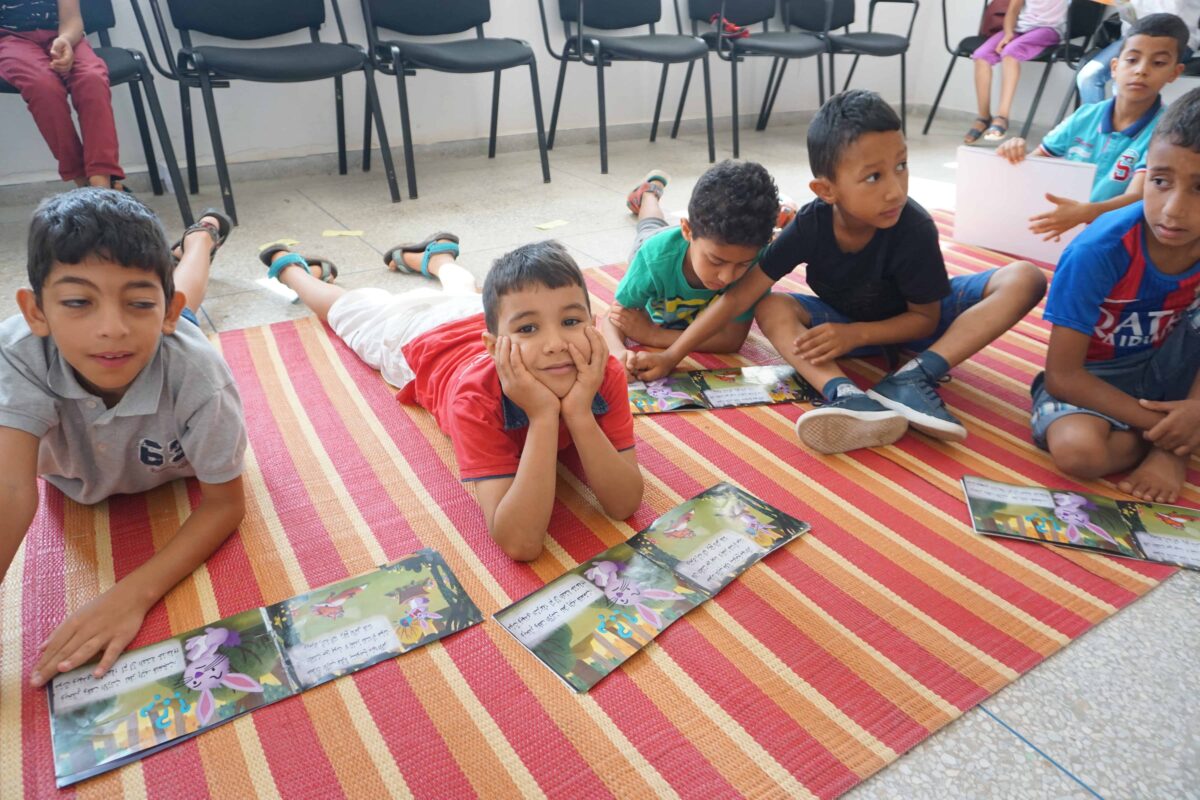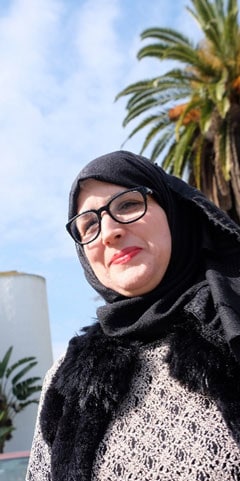USAID/Morocco and Creative add Moroccan sign language to remote learning during the pandemic.Rabat, MoroccoMina Daoudi began to receive desperate messages from her students when Morocco closed schools in response to COVID-19. The students are deaf and hard of hearing, and typically their parents don’t know Moroccan sign language (MSL), which meant they were cut off from the only place where they can communicate with other children with similar disabilities and teachers trained in MSL.

“They felt excluded at home, where they don’t have anyone to talk to,” says Ms. Daoudi.
Sympathizing, Ms. Daoudi, like other teachers in Morocco, began to use video to teach children with hearing loss. She began informally holding video calls with groups of her former students during the lockdown so they would have a chance for MSL conversation.
Soon Ms. Daoudi would find herself providing the same sort of relief to students with hearing loss throughout Morocco, who confronted cultural and learning limitations before the pandemic. Although the government had rushed to record video versions of standard lessons for primary-school students during lockdown, the videos lacked MSL interpretation. Supported by USAID’s Reading for Success-National Program for Reading implemented by Creative Associates International, the Moroccan government filled that gap.

Ms. Daoudi and another interpreter, Fouziya Boulaftali, are adapting standard lessons to meet the needs of first through sixth graders with hearing loss. These lessons, which are recorded in a Ministry of Education studio, are then shared on a national television channel, website and app. The U.S.-Moroccan cooperation is on track to produce almost 600 adapted video lessons in math, science, Arabic, French, and Islamic studies by July.
Ms. Daoudi, who has 24 years of experience as a classroom teacher, has earned a reputation for inspiring devotion in her students, even the difficult ones.
She recalls a boy her co-workers warned her about, Yassin, a deaf 8-year-old who was alternately disobedient and withdrawn. She looked for an inroad. “When a student comes to me, I don’t know what background s/he comes with. I don’t know if s/he is angry or if s/he has some kind of problem at home,” she says. “In order for a student to be educated, the student needs to feel comfortable.”
Ms. Daoudi noticed Yassin had an affinity for maps, and she encouraged it. He began drawing maps at home and bringing them in to show her.
“One day, he came in and hugged me and told me, ‘I love you.’ After that, when he would come into the classroom, he wanted to be the first one to write what he learned and share it with the students,” she says.
A jarring transition, a beautiful result
Despite her extensive experience, the transition to remote teaching was jarring. When the camera pointed at Ms. Daoudi, she felt fear. For the first few days, she would record only a brief segment and anxiously play it back to see whether it was clear.
“I wasn’t sure if what I was teaching would reach those students, if they would grasp it,” she says.
After the first lessons were broadcast, Ms. Daoudi began to receive messages of thanks. One former student, 13-year-old Lina, had been worried she would have to repeat sixth grade when school closed. “I have been waiting, but no one can teach me,” Lina signed to Ms. Daoudi. “One day I saw new sign language lessons on TV. I took my notebook, started copying, writing and learning on TV. I followed every lesson.” Lina was able to advance to seventh grade.
The next time Ms. Daoudi stood in front of the camera, instead of an empty studio behind the cameraman, she imagined seeing the faces of her former students filling the room.
“When I prepare the lesson, I imagine the students who were in my class. And when I choose the sentences, I try to find varied sentences that certain students would like. For example, Yassin loves football, so I would include a sentence that includes football.”
Imagining that the remote students are present makes a difference. “People who saw the videos told me they noticed I’m smiling while I’m giving the lesson. That’s because I don’t see only chairs and walls in front of me while I’m speaking,” Ms. Daoudi says. “When I speak, I see in front of me a real classroom.”
As classes resumed in person in parts of the country, Ms. Daoudi received messages of praise from teachers in Morocco’s different regions who were using the videos in class.
“I found the sign language that you did amazing and beautiful,” said Nora Tamrarad, a teacher in Oujda, Morocco, in a voice message.
So Ms. Daoudi’s vision evolved again. Instead of picturing her own former students before her as she recorded, she imagined every student in Morocco with hearing loss, an estimated 4,000 children.
“What’s very special about this work is it’s targeted at a minority of students who cannot understand the typical lessons but need it to be translated to MSL,” she says. “Not everybody can do it. What makes it special is I need to make these students love me before I educate them. How can I teach someone who doesn’t love me? I can’t convey the information like a machine. I need to build that relationship between me and the learner.”
Across the distance via video, Ms. Daoudi is still giving students the love and positivity she used to give in person. If she cannot receive hugs in return, she draws sustenance from the notes she receives on Facebook and voice recordings on WhatsApp.
“When I get a message saying, ‘Lina loves Mina,’ ‘Mohammed likes the video of Mina,’ that’s my feedback.”
This article was written with support from Laila Khana.